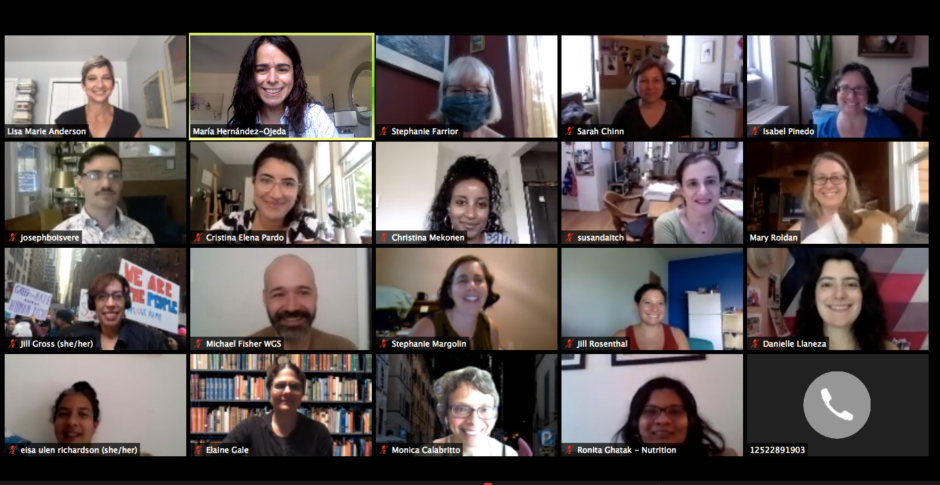The Faculty Working Group on discussion-based courses consisted of 23 colleagues from 14 disciplines. Led by Lisa Marie Anderson and María Hernández-Ojeda, the group used a Padlet to get to know each other and a Blackboard site to collect, share, and discuss materials. We met on Zoom every Wednesday afternoon from July 15 to August 5.
Our first meeting focused on the transition to online teaching and our expectations for synchronous and asynchronous learning: balancing content and discussion, scaffolding discussion, letting go of some traditional in-person class structures, familiarizing students with the course format, and creating videos to introduce students to the new course platforms and technologies. We considered the logistics of synchronous sessions, particularly how and when to encourage cross-talk among students, use the chat box, introduce polls to reinvigorate discussion, and use virtual background options. We talked about how to foster meaningful responses versus formulaic answers for Discussion Board assignments, encourage student-led discussions, create take-home exams, and foster community.
For our second meeting, faculty worked through ideas about their course structures and calendars. We began with breakout rooms of three or four colleagues each. The asynchronous interaction group examined the differences between Zoom and Blackboard Collaborate, how to implement discussion guidelines, and how to foster online discussion with different tools. Another group focused on synchronous student engagement and examined how students can help create guidelines for discussion. Other colleagues considered student workload in these extraordinary times, including how instructors can be flexible as the semester unfolds, as well as the length and complexity of reading and writing assignments. We also discussed student support from the Hunter Libraries, including 24/7 chat, 1-on-1 or small group consultations by phone or Zoom, asynchronous modules, and visits to classes.
At our third meeting we talked about course materials and assignments, with help from a presentation by Shiao-Chuan Kung about digital platforms that foster discussion, including Padlet, Flipgrid, and Bb Discussion Boards. We created six breakout rooms and small groups discussed strategies for video recording (including with Loom and VoiceThread, or even for giving students feedback on their work), research papers, student presentations, student-led conversations (including via 3-2-1 assignments), small-group assignments, and Discussion Board threads. At this meeting we also shared ideas on how to support students in these difficult times, including when they reveal personal struggles to us, with help from Hunter’s Behavioral Response Team and Counseling and Wellness. During our meetings and on our Discussion Board, we talked a lot about how we are handling emotionally difficult and even traumatic subjects in this time of crisis and protest, and how to ensure that our online courses are inclusive.
At our final meeting we presented our work in two groups: one for faculty teaching mostly synchronously and one for faculty teaching mostly asynchronously. Faculty shared syllabi and assignments that implement the ideas discussed in our working group. We agreed to meet again during the semester to check in with each other and continue to share strategies.



Comments are closed.